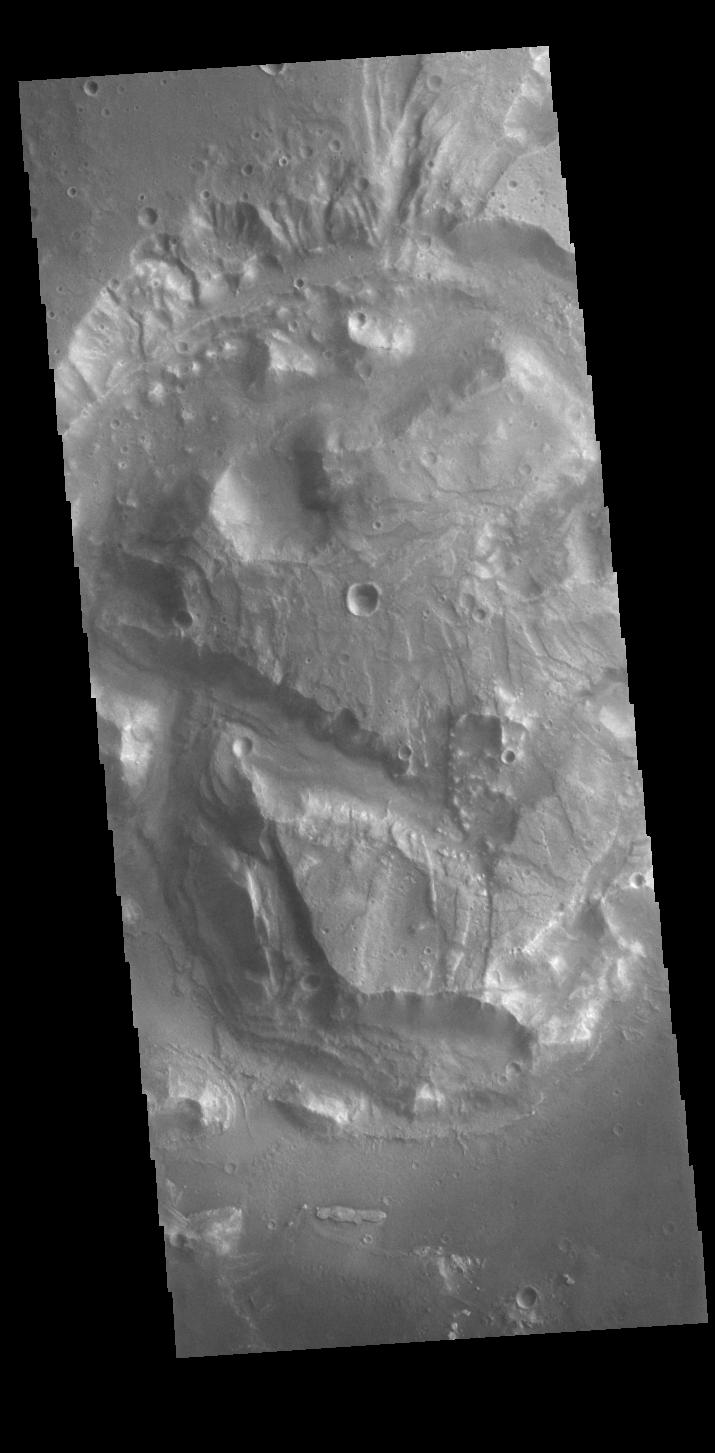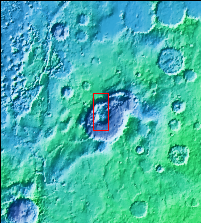
|
What Could It Be?
- Click the image above for a larger view
- Full-Res JPEG (715 x 1453) (84.2 kB)
- Full-Res TIFF (715 x 1453) (745.3 kB)
Caption:

Context image
Today's VIS image shows a complex block of material located on the floor of an unnamed crater in Arabia Terra. The feature is offset from the center of the circular depression and is approximately the same height of the surrounding surface. It is unlikely to be a peak created during the cratering event. Perhaps the crater is not an impact formed feature and was created by some other process. It is often difficult to interpret the geologic processes that created landforms from data collected far above the surface.
Orbit Number: 77292 Latitude: 33.8263 Longitude: 348.721 Instrument: VIS Captured: 2019-05-18 12:52
Background Info:
Please see the THEMIS Data Citation Note for details on crediting THEMIS images.
NASA's Jet Propulsion Laboratory manages the 2001 Mars Odyssey mission for NASA's Science Mission Directorate, Washington, D.C. The Thermal Emission Imaging System (THEMIS) was developed by Arizona State University, Tempe, in collaboration with Raytheon Santa Barbara Remote Sensing. The THEMIS investigation is led by Dr. Philip Christensen at Arizona State University. Lockheed Martin Astronautics, Denver, is the prime contractor for the Odyssey project, and developed and built the orbiter. Mission operations are conducted jointly from Lockheed Martin and from JPL, a division of the California Institute of Technology in Pasadena.
Cataloging Keywords:
| Name | Value | Additional Values |
|---|---|---|
| Target | Mars | |
| System | ||
| Target Type | Planet | |
| Mission | 2001 Mars Odyssey | |
| Instrument Host | Mars Odyssey | |
| Host Type | Orbiter | |
| Instrument | Thermal Emission Imaging System (THEMIS) | |
| Detector | ||
| Extra Keywords | Crater, Grayscale, Impact, Thermal | |
| Acquisition Date | ||
| Release Date | 2019-07-05 | |
| Date in Caption | 2019-05-18 | |
| Image Credit | NASA/JPL-Caltech/ASU | |
| Source | photojournal.jpl.nasa.gov/catalog/PIA23325 | |
| Identifier | PIA23325 | |
